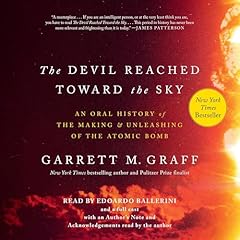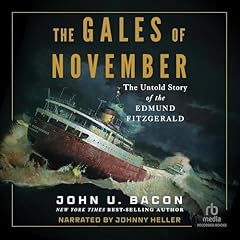
Atomic Bomb Island
Tinian, the Last Stage of the Manhattan Project, and the Dropping of the Atomic Bombs on Japan in World War II
No se pudo agregar al carrito
Add to Cart failed.
Error al Agregar a Lista de Deseos.
Error al eliminar de la lista de deseos.
Error al añadir a tu biblioteca
Error al seguir el podcast
Error al dejar de seguir el podcast
Obtén 3 meses por US$0.99 al mes
 Exclusivo para miembros Prime: ¿Nuevo en Audible? Obtén 2 audiolibros gratis con tu prueba.
Exclusivo para miembros Prime: ¿Nuevo en Audible? Obtén 2 audiolibros gratis con tu prueba.
Compra ahora por $17.47
-
Narrado por:
-
John Lescault
Atomic Bomb Island tells the story of an elite, top-secret team of sailors, airmen, scientists, technicians, and engineers who came to Tinian in the Marianas in the middle of 1945 to prepare the island for delivery of the atomic bombs then being developed in New Mexico, to finalize the designs of the bombs themselves, and to launch the missions that would unleash hell on Japan.
Almost exactly a year before the atomic bombs were dropped, strategically important Tinian was captured by Marines - because it was only 1,500 miles from Japan and its terrain afforded ideal runways from which the new B-29 bombers could pound Japan. In the months that followed, the US turned virtually all of Tinian into a giant airbase, with streets named after those of Manhattan Island - a Marianas city where the bombs could be assembled, the heavily laden B-29s could be launched, and the Manhattan Project scientists could do their last work.
Mariana Islands historian Don Farrell has done this story incredible justice for the 75th anniversary. The book is a thoroughly researched mosaic of the final phase of the Manhattan Project, from the Battle of Tinian and the USS Indianapolis to Hiroshima and Nagasaki.
©2019 Don A. Farrell (P)2021 Blackstone PublishingLos oyentes también disfrutaron:




















Las personas que vieron esto también vieron:





Great account of the people and logistics it took to deliver the atomic bombs
Se ha producido un error. Vuelve a intentarlo dentro de unos minutos.
Although the book name sounds stupid… it’s an excellent book.
Se ha producido un error. Vuelve a intentarlo dentro de unos minutos.
TRUE HISTORY!
Se ha producido un error. Vuelve a intentarlo dentro de unos minutos.
A Special History
Se ha producido un error. Vuelve a intentarlo dentro de unos minutos.
Good narrator, interesting details
Se ha producido un error. Vuelve a intentarlo dentro de unos minutos.


